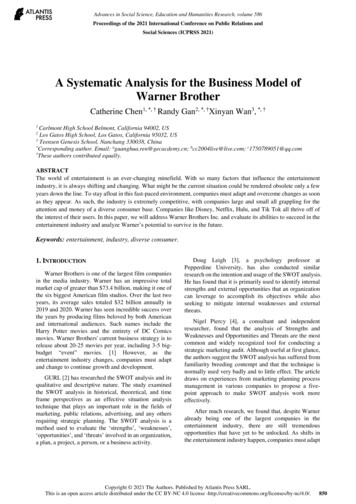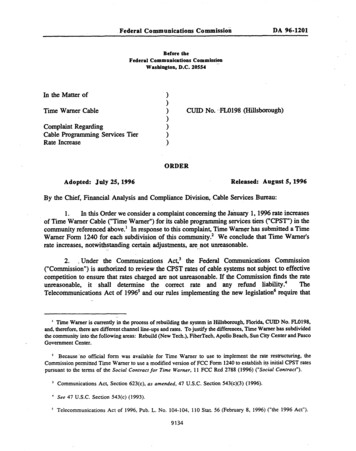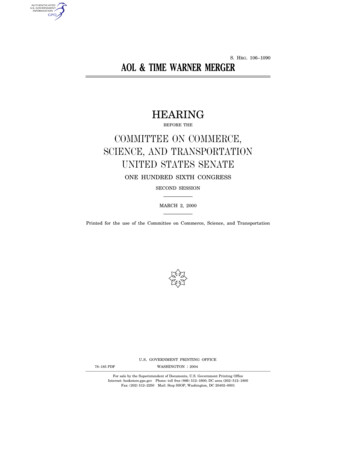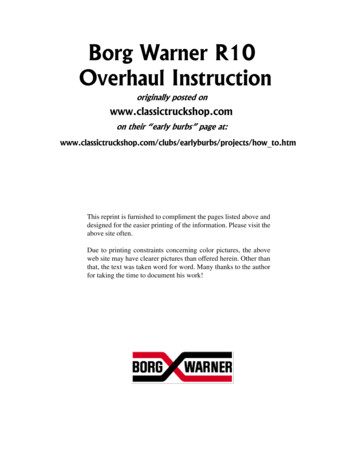
Transcription
Borg Warner R10Overhaul Instructionoriginally posted onwww.classictruckshop.comon their “early burbs” page cts/how to.htmThis reprint is furnished to compliment the pages listed above anddesigned for the easier printing of the information. Please visit theabove site often.Due to printing constraints concerning color pictures, the aboveweb site may have clearer pictures than offered herein. Other thanthat, the text was taken word for word. Many thanks to the authorfor taking the time to document his work!
Rebuilding the Borg Warner Overdrive UnitThere’s two versions of this transmission. One has a light built SM-318 otherwise known as theMuncie, and the SM-326, otherwise known as the Saginaw 3 speed. The Saginaw is a muchheavier built unit, and has all helical synchronized gears except reverse. The overdrive unit on aSaginaw box is a R10Q-1 instead of the R10H-1A. The only difference is the shorter tail shaft tooffset the larger main transmission. Ratios: First-2.85:1, second-1.65:1, third-1:1, and overdrive0.85:1. The overdrive unit is actually two transmissions back to back. The front box is one of theabove mentioned boxes, and the back end is a two speed overdrive box.This page is intended for someone who needs to get inside the overdrive unit for whatever reason. There are a few tricks to be aware of when taking it apart, and when reassembling. Hopefully, these photos and text will help the rebuilder avoid otherwise unforeseen problems. The uniton this page is a very good unit. I disassembled the overdrive unit and the main transmission forinspection before installing it in my ’65 Suburban.The first step is to remove the freewheelclutch lockout taper pin. If you forget, the case won’tcome apart due to the linkage inside. Remove the lockout lever too.Remove the 5/8" and 1/2" bolts all the wayaround. Then. STOP!!! Read the next panel ——— DON’T let the case next to the transmission come apart! Note in the picture where the crackis starting. If the center section slides out, the bearingpins in the main shaft of the transmission will fall out!Hours of extra work if they do!!
The rear case removed. This is the center section, andcontains the rear bearing, linkage, solenoid mount, andgear assy for the overdrive. The transmission’s mainshaft is part of this unit, and it takes the place of the reartranny case on a non-OD unit.The rear section contains the ring gear, rear bearing,speedo drive, governer switch, and clutch lockout linkage. Beware the spring in the hole in the right side. Thelockout linkage fits in the hole, and the spring keepsforward pressure on it. Don’t let it fly out and get lost!!This is looking into the clutch hub and ring gear. There isa stepped section that’s rough in the first part of thecenter’s machined smooth section. Don’t panic. This isnormal, and it helps the clutch pins slide in during reassembly.Remove the U-Clip from the end of the shaft. Slide theplanet gear set and lockout linkage off as a unit.The bigger U-Clip holds the clutch assy. This is theplanet set and lockout linkage from another angle. Theclutch is removed in this shot.
This is the sun gear after the planet set is removed.Remove the reverse lockout pin also. It sits behind thelockout linkage rod assy.Remove the big snap ring to release the splashguard and linkage face plate. The solenoid locking gearand slide block resides in here.This is all the parts laid out in order of assembly. Thebig pin is the reverse lockout rod. Without it, the freewheel clutch would spin out in reverse, and the truckwon’t move.These are the clutch pins that fall out as the rearcase is removed. There should be twelve of them. If not,get down on your hands and knees, and start looking!!You’ll need ‘em all!!The freewheel (one-way) clutch. Note the ramp shapeson the hub. The rollers ride up the slope and jam theinside of the center part of the ring gear section undertorque. They roll down as the truck rolls forward lettingthe engine idle.
This unit didn’t have oil drain plugs. Typical 1970’sSave-A-Buck thinking. The castings are there, so wedrilled them for a 1/4" pipe plug fitting. The choice isyours. Do it now, or lay underneath with a turkey bastebulb later while trying to suck out the old oil!Tapping out the hole with a 1/4 pipe thread tap. It has adrain plug NOW!! Make sure every speck of tap-debrisis flushed out of the case and rear bearing. Most unitsalready have the oil drains, however. If yours does,yeehaw! Move on to the next step.Assemble the clutch onto the planet set. It’s a bit trickyto get the big U-Clip snapped on again. Having help isgreat.This is overdrive position. The solenoid pushes theblock in, and it sits with spring pressure until the nextslot comes around. The sun gear locks up, and the planets spin around it, and inside the ring gear causing abouta 27% increase in output shaft speed.In direct, the solenoid lets the block slide out. Thesun is released and tries to spin in the planets. Thiscauses a lockup of the planet set, and the sun, planets,and ring gear spin as a unit. The shift rod lets the sunslide back into the planet case so it locks solid for direct.
This is the shift rod in overdrive position. The groove inthe sun gear lets the planet cage spin past.This is the shift rod in direct position. It puts the gearinto the planet cage to lock it up.Put a couple of bolts in the center section, and leave theheads out about 1/2"- no more than this to keep thetranny’s main shaft bearing pins in place. Work gasketsealer in the edges here using a screwdriver.Assemble the solenoid block and locking gear with theC-Clip spring facing out. The snap ring needs to beunder the notch in the splash guard first, or you willfight it. Watch the angle of the solenoid slide block. Itshould match the slots in the locker.Slide the sun/planets/clutch on while holding the shiftrod in the sun gear’s fork groove. It will take threehands for this one. Don’t forget to put the reverse lockout rod in it’s hole first. You will have to use heavygrease to glue the clutch pins in place. Apply sealer tothe case mating surface now.
Remove any bolts, and carefully slide the rear caseonto the unit. Help here is good. Have the helper turnthe yoke to get the gears lined up as it goes together.The linkage rod slides into the hole with the spring.make sure the notch is facing down on the rod, and thespring is in the center of the hole. It you hear a clutchpin drop and hit the case, start over again.Put the lockout lever in, and after checking to see if itworks the rod, tap the taper pin in. The lever is in theoverdrive position here. Flipped forward is the lockout position. The yoke should turn easy one way withthe lever flipped towards the rear, and turn the trannyshaft when spun the other way.Install the solenoid by rolling the tranny upright toslide the block down. Twist the solenoid as it’s put into lock the ball to the slide block notch inside. Holdthe solenoid in with pliers to test the overdrive shifting. Put the tranny in direct, and spin the input shaft.The output should spin faster when it locks in.Gotta make it look nice. Good ol’ Chevy orangelooks clean, and the engine paint practically sticks toanything.Ready to Install! Don’t forget the oil!!!This document was downloaded from the Old Burb Club atwww.classictruckshop.com
ets spin around it, and inside the ring gear causing about a 27% increase in output shaft speed. In direct, the solenoid lets the block slide out. The sun is released and tries to spin in the planets. This causes a lockup of the planet set, and the sun, planets, and ring gear spin as a unit. The shift rod lets the sun
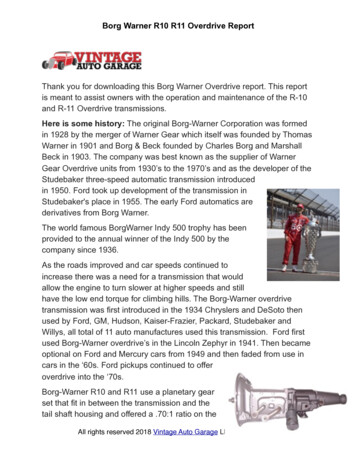
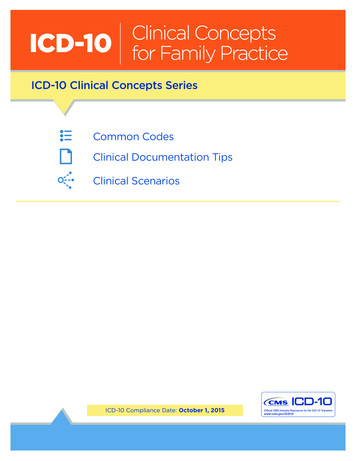
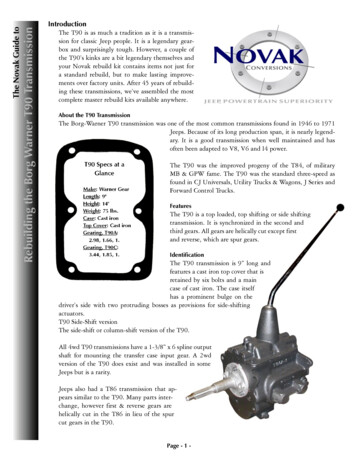
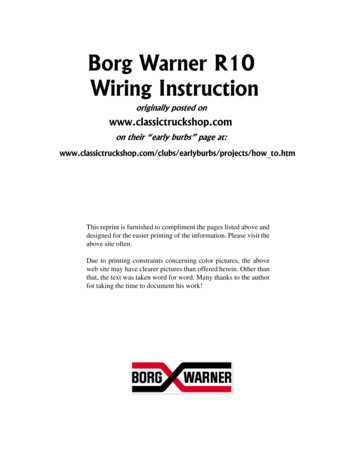
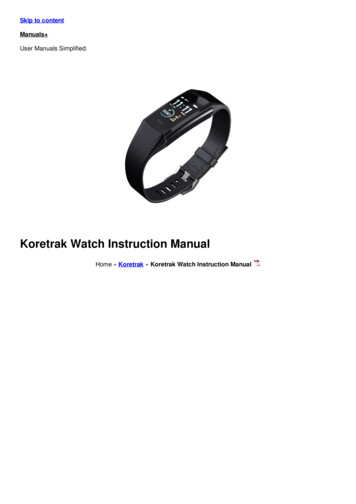
![To Kill a Mockingbird [cs] - Summer Reading 2017](/img/29/to-kill-a-mockingbird.jpg)
